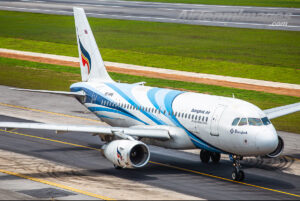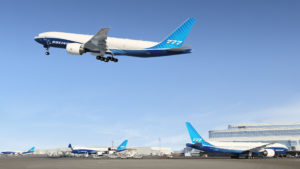IBA, a leading aviation market intelligence and consulting company, has published its expectations for the year ahead for global aviation, examining macro-economic factors, supply and demand and challenges to airline and aircraft values.
Dr Stuart Hatcher, IBA’s Chief Economist, builds on the macroeconomic concerns in 2022 from the war in Ukraine to the constantly changing lockdowns in the Chinese market, stating that because of these environments, a slowdown in productivity is unavoidable. Collectively, these factors, amongst others, will manifest in GDP growth shrinking from around 3.2% in 2022 to 2.7% next year (IMF), with an outside chance of it dropping below 2.0%.
Looking specifically at the aviation industry, Dr Hatcher notes that 2023 will likely see the point when pricing pressure (against fares and disposable income) will drive fares downwards as additional capacity comes online. Unit costs are not dropping significantly, while inflation, large crack spreads, labour shortages, the strength of the US dollar, and interest rate rises, are continuing. Airlines will therefore be faced with either cutting capacity to reduce cost, or reduce fares to stimulate growth (the latter being the more likely choice).
Turning to airline capacity, Geoff van Klaveren, IBA’s Managing Director – Advisory, acknowledges that this was constrained in 2022 as the industry struggled to meet a strong rebound in demand following the lifting of travel restrictions. While OEMs still have supply chain problems, most airlines and airports will be looking to return as much capacity to the market as they can in 2023, given the strength of passenger yields this year.
Van Klaveren suggests that airline ticket prices will be lower in 2023 compared to 2022. This will mainly be caused by an increase in industry capacity. Despite such a bleak outlook for the macro-economic environment, IBA believes demand might be surprisingly resilient because of continued pent-up demand, lower ticket prices and the fact that lower fuel prices will lower the break-even point for marginal routes.
He also forecasts the possibility of increased M&A activity in 2023, noting that failures during the pandemic were very low due to state support. Now that support has ended, many airlines have weak balance sheets and are facing a difficult outlook for 2023. As such, IBA expects to see an increase in consolidation in the industry and expects second-tier network airlines to look for marriages with one of the ‘Big-3’ (IAG, Lufthansa, or Air France-KLM).
The values of new aircraft will rise sharply in 2023, predicts Mike Yeomans, Director – Valuations & Consulting at IBA. Escalation in OEM pricing contracts is typically pegged to a blend of labour and material cost indices. With the high inflationary environment seen this year, IBA expects to see average new aircraft price rises through the second quarter of 2023.
and a greater recovery in wide-body demand also in 2023. International long-haul has lagged the domestic and intra-regional recovery observed in the last 18 months, largely driven by the continued lockdown policies in China. Despite this limitation to the global recovery, wide-body capacity has recovered steadily. With signs that restrictions may ease and the release of pent-up international demand this could cause, IBA forecasts a more meaningful recovery in demand for the most popular wide-body models.




























